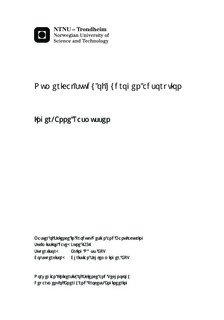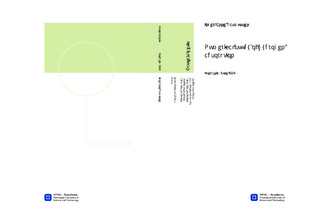| dc.description.abstract | The main objective of this thesis is to describe the transient thermodynamics during physisorption of hydrogen gas using a commercial numerical software.Simulations of thermal effects during adsorption are valuable tools for the efficient design of hydrogen adsorption storage systems. Transient mass and energy equations are used for describing the adsorption process. For this purpose, experimental adsorption data has to be presented analytically. Several models have been developed for this objective.The thesis consists of two parts. In the first, a literature study on adsorption theories and thermodynamic assumptions for development of transient mass and energy balances is conducted. The models are discussed, and from this, the Langmuir approach is selected to be used for numerical calculations. The model is implemented into a lumped-parameter analysis describing an infinitesimal element within an adsorbent bed, allowing for neglecting heat leaks into the system as well as the structural steel mass. The second part describes the simulations conducted in the study. The numerical software COMSOL Multiphysics 4.2.a is used for numerical calculations. Modules for implementation of the transient mass and energy balances are considered, before Heat Transfer in Porous Media and Brinkman Equations are applied, for heat transfer, pressure- and velocity calculations, respectively. The simulations are run for different initial and boundary conditions. The porous material is defined with Fe-btc properties. The simulation model is built step by step, and problems encountered are analyzed continuously in the process towards a complete model. After completion, the model geometry is adjusted and the porous material is changed to MOF-5 properties, to resemble a selected published paper. Numerical results are compared and discussed. Modeling restrictions for the present study is accounted for, and all choices made when considering the assigned task are justified. The report is completed by listing the conclusions drawn from the present study, and concrete suggestions for further work are given.Simulation results found in the present study differs slightly from the published research work. Instabilities in the solver results in a temperature dip in the simulated domain. This leads to an increased adsorption rate. Furthermore, it appears that mass is not conserved, which means that the inlet velocity of the feed gas does not change as expected when the adsorption is disabled from the model. | nb_NO |

